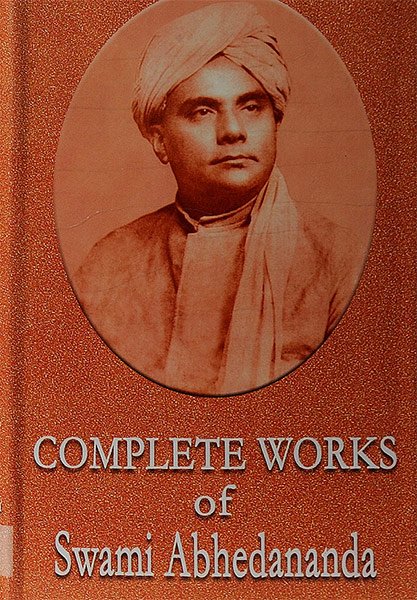Complete works of Swami Abhedananda
by Swami Prajnanananda | 1967 | 318,120 words
Swami Abhedananda was one of the direct disciples of Sri Ramakrishna Paramhamsa and a spiritual brother of Swami Vivekananda. He deals with the subject of spiritual unfoldment purely from the yogic standpoint. These discourses represent a study of the Social, Religious, Cultural, Educational and Political aspects of India. Swami Abhedananda says t...
Symbology of the Cross or Crux
Extracted from Chapter IV (“necessity of symbols”):
“[...] The ancient Egyptians used a Tau Cross, the shape being like the English letter ‘T’. The commonest of all the Egyptian Crosses, the Crux Ansata, was afterwards adopted by the Christians. [...]”
The Cross or Crux is mainly of four kinds: (1) Simplex, (2) Decussata, (3) Commissa and Ansata, and (4) Immissa or Capitata (Latin).
(1) The Crux Simplex, or bare stake ‘of one single piece without transom’, was probably the original of the rest. Sometimes it was merely driven through the man’s chest, but at other times it was driven longitudinally, * * coming out at the mouth, a method of punishment, called the infixio.
The affixio consisted merely of trying the criminal to the stake, from which he hung by his arms.* * Trees were naturally convenient for this purpose * *.
(2) The Crux Decussata, X, is called St. Andrew’s Cross, although on no good grounds, since, according to some, he was killed with the sword; and Hippolytus says that he was crucified upright, ad arborem olivae. It is in the shape of the Greek letter X. * * Hence Justin Martyr quotes Plato’s expression * * with reference to the Cross.
(8) The Crux Commissa or St. Anthony’s Cross, T, (so called from being embroidered on that Saint’s cope * *) was in the shape of a T. * * This shape is often alluded to as the mystical Tau’. * * It is known as the patibulary or Egyptian Cross, but seems to be of Phoenician origin.
A variety of the Cross (the Crux Ansata, ‘Crosses with circles on their heads’) is found ‘in the sculptures from Khorasabad and the ivories from Nimrod. M. Lajard * * refers it to the Assyrian symbol of divinity, the winged figure in a circle; but Egyptian antiquaries quite reject the theory. In the Egyptian sculptures, a similar object, called a Crux Ansata, is constantly borne by divinities, and is variously called ‘the key of the Nile’, ‘the character of Venus’, and more correctly (as by Lacroze) ‘the emblem of life’.
(4) The Crux Immissa (or Latin Cross +) * * That this was the kind of Cross on which our Lord died is obvious * *, it is repeatedly found on the coins and columns of Constantine, * * Firmic. Maternus says that Moses made a Cross of his rod * *. Other supposed types are Jacob’s ladder * *; the paschal lamb, pierced by transverse spits * *.—Vide Smith & Fuller: Bible Dictionary, Vol. I, pp. 671-672.
FAQ (frequently asked questions):
Which keywords occur in this article of Volume 1?
The most relevant definitions are: Plato, Venus; since these occur the most in “symbology of the cross or crux” of volume 1. There are a total of 2 unique keywords found in this section mentioned 2 times.
Can I buy a print edition of this article as contained in Volume 1?
Yes! The print edition of the Complete works of Swami Abhedananda contains the English discourse “Symbology of the Cross or Crux” of Volume 1 and can be bought on the main page. The author is Swami Prajnanananda and the latest edition is from 1994.
